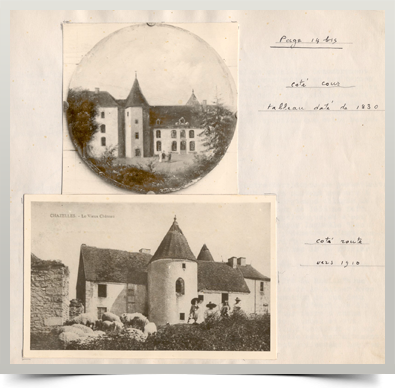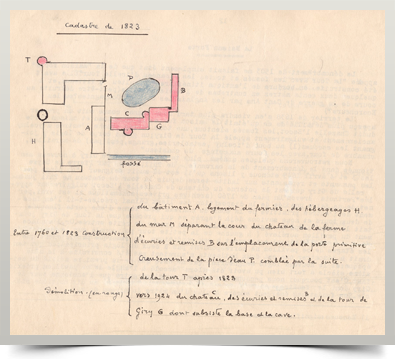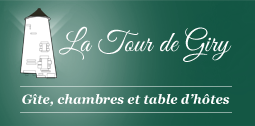Our farm, a witness to history

From the Neolithic to the Roman Empire: facts and conjectures
The village of Fontangy, to which our farm is attached, has not had the privilege to see many great names in French history; it has witnessed no remarkable events; only the ordinary life of humble people has taken place here. Why then would one take an interest in it? Because in spite of the historians’ neglect our village represents the many characteristics of typical small French villages. Close to our farm one can find traces of an ancient stone fortification perched on a rocky spur, probably the vestige of human occupation going back to the Neolithic and lasting until the Roman conquest of Gaul. Also, a crossroads situated near our farm seems to have been marked at one time by a stone, described in the 1503 census as the Pierre de Picouvert; could this have been an ancient megalith, now disappeared? Finally, the name of our hamlet, Chazelle l’Echo, might have its origin in the association of two words: Casellae and Escot. The former, a Latin word, betrays the Roman presence in this area and means “little houses,” while the latter, coming from the Germanic “Skot,” suggests an ancient Barbarian presence and probably means “wood.” We are ourselves the modern representatives of this double origin as a French-German couple who strives to perpetuate the cultural and historical wealth of the village!
The origins of the gîte: the Middle Ages
Interestingly, French roads, especially the smaller ones, often follow very closely the ancient patterns. This is the case for the RD26, where the farm of the château of Chazelle l’Echo is situated. This departmental road follows the path of the old road from Saulieu to Vitteaux: Gaulish first and then Roman, it has remained unchanged. And it is by its side, right next to our farm, that reports from the 16th and 17th centuries place a motte-and-bailey castle. The 1503 census mentions a fortified house called La Tour; but the 1638 land survey is more precise and mentions a compound consisting of a castle, a fortified house, a tower and farm buildings. The castle keep is thus called… La Tour de Giry. This is then the first official mention of our abode, but in reality it is probably much older as the motte-and-bailey was destroyed during the Hundred Years’ War. Both protection and toll, La Tour de Giry was the perfect place to levy taxes on the travellers plying the road from Saulieu to Vitteaux. As early as the Middle Ages, then, what is now our home was inescapable!

From the Middle Ages to the present
The fortified house has evolved over the centuries: towers were added, then demolished; the castle itself was taken down in 1930. But the farm buildings, handed down from one generation to the next and changing hands at the whim of history, have survived, and one day we fell in love with its stones, its aura, and its surroundings: the Côte d’Or. And so we have decided to make it a place of multicultural exchange and well-being. Its former owner, a history enthusiast, started his own research in the 1970s, consulting public and private archives and contacting historians with the help of two students. Little by little, they were able to reconstruct the history of our farm, now open to all. If you, too, are passionate about history, join our table d’hôtes, stay in our guestrooms or our gîte, and talk with us. We shall all come richer out of this encounter, and the bonds thus forged may travel through history.




